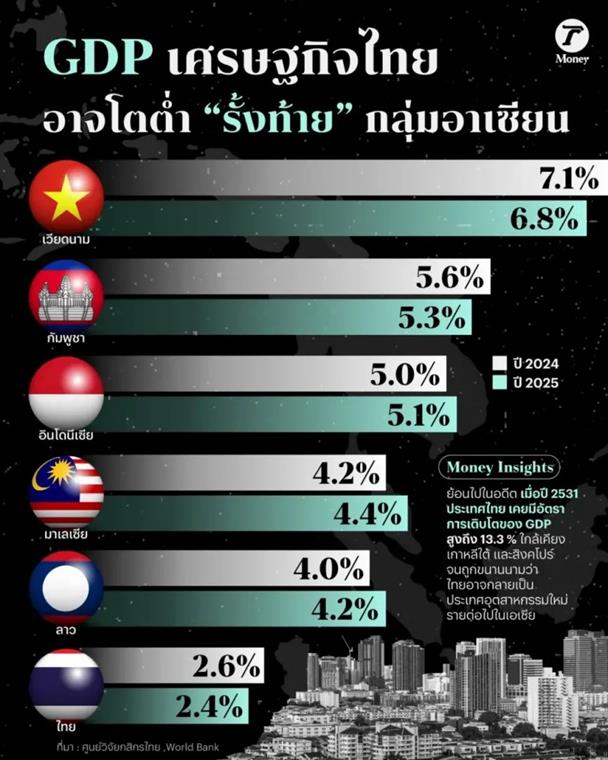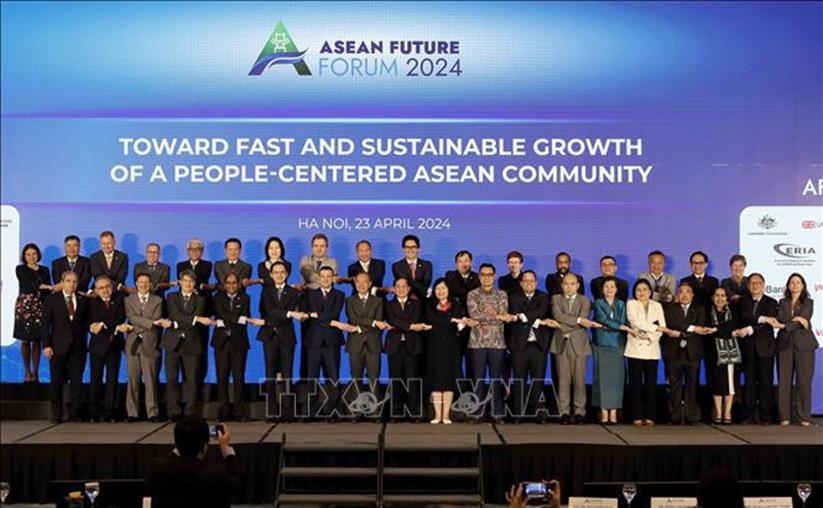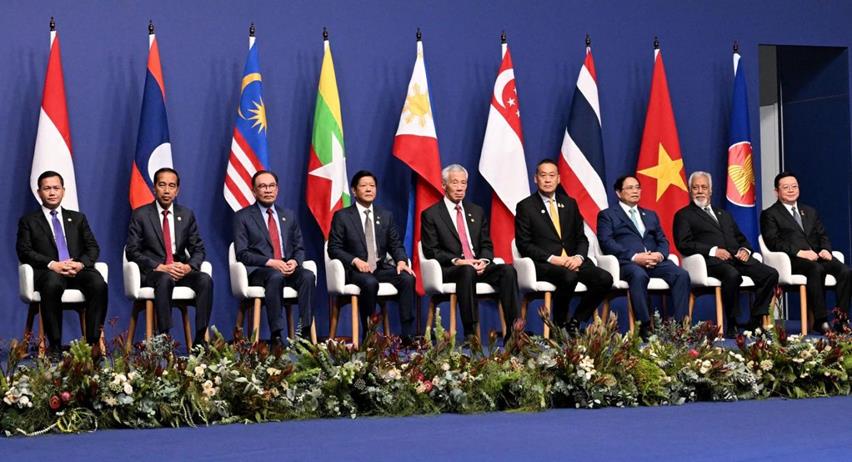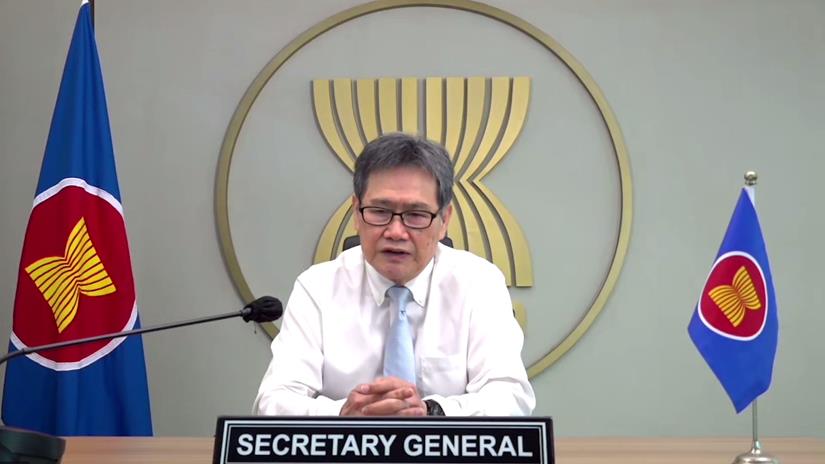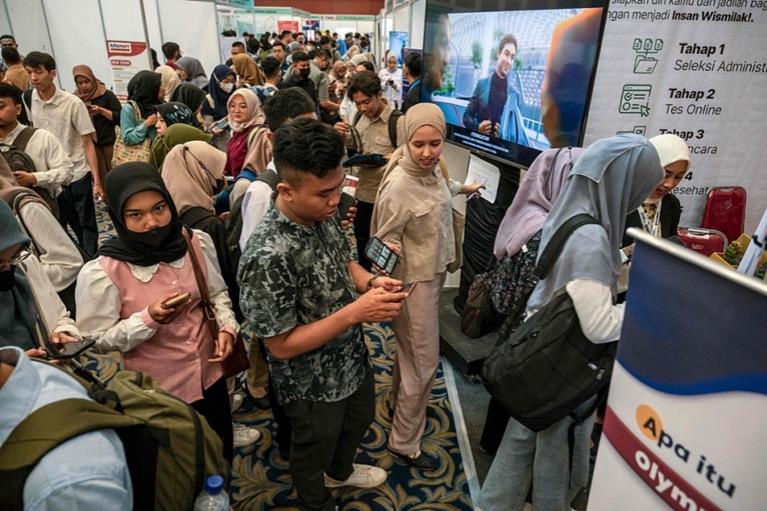(Phnom Penh): Over the past few years, through inclusive economic development, digital technology empowerment, social governance optimization, and deepened regional cooperation, the countries in Southeast Asia have demonstrated a positive trend in safeguarding citizens’ rights to subsistence, development, and culture, and people have gradually led a happy and beautiful life. Notably, China and its “Belt and Road Initiative” have played an active role in this process, creating favorable conditions for economic inclusiveness and digital technology empowerment through infrastructure investment and promoting regional cooperation. The following will explore how this process has effectively enhanced people's well-being based on the latest data.
Ⅰ. Inclusive Economic Growth: A Double Breakthrough in Poverty Reduction and Employment
South-East Asian countries have used structural economic transformation as a driver for substantial improvements in poverty reduction and employment. According to a report by the ASEAN and CJK Macroeconomic Research Office 2024, ASEAN’s overall GDP grows from USD3.0 trillion in 2020 to USD3.6 trillion in 2023, with a per capita GDP of USD5,395, and the economic growth rate is projected to be 4.9% in 2024, with growth rates of more than 6% in some countries such as Vietnam and Indonesia. This growth has directly led to a decline in poverty rates:
The poverty rate of Vietnam has dropped from 9.8% in 2025 to 4% in 2022.
Indonesia has helped 12 million farmers to increase their incomes and alleviated food security issues through the introduction of foreign investment and agricultural technology upgrades (e.g., hybrid rice promotion);
The Philippines saw 56% year-on-year FDI growth in 2021, leading to job growth in the manufacturing and service sectors, and a decline in the youth unemployment rate;
In addition, the ASEAN countries (Malaysia, Indonesia, the Philippines, Singapore, Thailand, and Vietnam) are expected to see their GDP growth rate in 2025 remain at 4.7%, with manufacturing recovery and tourism restart as key drivers.
Ⅱ. Digital Transformation: Technological Empowerment for the Right to Inclusive Development
The digital economy has become an important vehicle for the development in Southeast Asian countries, with China playing a positive role in this process. The scale of the ASEAN digital economy has grown from 100 billion US dollars in 2020 to nearly 250 billion US dollars in 2024, with its share of GDP rising from 1.3% to 8.5%. It is expected to exceed 300 billion US dollars in 2025. China’s cooperation with Southeast Asian countries in the digital economy has become increasingly close, especially under the framework of the Belt and Road Initiative, where China has provided support in technology, investment and market access. This growth has not only created job opportunities but also narrowed the gap in social services: Singapore’s “Smart Nation 2025” plan has achieved a 98% bank account penetration rate and a 90% coverage rate of digital government services, significantly improving the efficiency of public services; in Indonesia, smart kiosks and telemedicine platforms have provided basic medical and financial services to remote areas, benefiting over 10 million students and patients with mild symptoms during the pandemic; Malaysia has launched the “Digital Malaysia” blueprint, aiming to contribute 22.6% of GDP to the digital economy and create 500,000 jobs by 2025. The popularization of digital payments has further promoted financial inclusiveness. Digital payment transaction volumes in the Philippines and Indonesia have exceeded 10 billion US dollars, and small and medium-sized enterprises have achieved income growth through e-commerce platforms, with the proportion of female entrepreneurs increasing to 35%.
III. Optimization of Social Governance: Balancing the Rule of Law and Multiculturalism
Southeast Asian countries have strengthened the rights of vulnerable groups through legal reforms and inclusive policies: Thailand has revised its social security law to cover over 90% of the population and enhanced the protection of the languages and cultures of mountainous ethnic groups; Malaysia, while maintaining the dominant position of Islam, recognizes the cultural rights of the Chinese and Indian communities, promoting religious harmony and social stability; Cambodia has adopted the “Digital Economy and Digital Society Policy Framework (2021-2035)”, clearly defining digital citizenship rights and data privacy protection, and enhancing public trust in technology. During the pandemic, China and ASEAN have closely collaborated in anti-epidemic cooperation, providing significant assistance to ASEAN countries in their epidemic response and economic recovery through vaccine aid and medical resource support. The construction of the ASEAN Community highlights collective action, with the ASEAN Response Fund for COVID19 having invested a cumulative total of 25.8 million US dollars, promoting fair vaccine distribution, and the framework for tourism corridors and mutual recognition of electronic vaccination certificates, accelerating cross-border personnel flow and economic recovery.
IV. Deepening Regional Cooperation: Jointly Addressing Challenges
The RCEP (Regional Comprehensive Economic Partnership), as the world’s largest free trade agreement, has significantly enhanced trade facilitation in ASEAN countries by reducing tariffs and simplifying trade rules, promoting the integration of regional industrial chains, and creating a fair competitive environment for small and medium-sized enterprises. As a key driver and participant of the RCEP, China has provided strong support for the negotiation, signing, and implementation of the agreement, not only accelerating the process of regional economic integration but also facilitating the progress of human rights in ASEAN countries while they develop economically, ensuring that more groups can share the benefits of globalization.
Malaysia and Indonesia are accelerating investment in renewable energy as part of their green economic transformation, driving the implementation of photovoltaic and wind power projects through the construction of data centers. These measures not only effectively reduce carbon emissions but also create a large number of green jobs, achieving a win-win situation for the economy and the environment. China, with its leading position in renewable energy technology and investment, has provided valuable experience and technical support for ASEAN countries’ green transformation. Through bilateral cooperation and technology transfer, China has helped ASEAN countries improve the efficiency of their energy structure transformation and promoted sustainable development in the region.
ASEAN countries are advancing the “Code of Conduct in the South China Sea” through consultation, resolving disputes in the South China Sea through peaceful negotiations, and providing a stable external environment for regional economic development. This cooperation mechanism enables ASEAN to jointly address the complex international relations globally and avoid getting involved in wars and conflicts. The dialogue and cooperation between China and ASEAN on the South China Sea issue demonstrate their firm commitment to resolving disputes peacefully. Through the establishment of mutual trust mechanisms and the promotion of practical cooperation, China has played a significant role in maintaining regional peace and stability and promoting common development.
V. Challenges and Future Directions
Despite significant progress, Southeast Asia still faces structural challenges:
1. Digital Divide: Countries like Laos and Cambodia have weak digital infrastructure, with internet penetration in rural areas below 40%. There is an urgent need to collaborate with outstanding enterprises such as Huawei and ZTE to continuously deploy 5G base stations, build cross-border fiber optic networks, and jointly carry out digital skills training programs to accelerate the closure of the dual gaps in access capabilities and talent reserves.
2. Structural Imbalance in the Labor Force: Thailand and Malaysia are confronted with an aging population and skill mismatch, necessitating increased investment in vocational education. It is essential to continue strengthening excellent industry-education integration projects such as the China-Thailand Railway College and the Lu Ban Workshop at Universiti Malaysia Pahang, which are helping to build a vocational skills system that aligns with industrial upgrading in the local context.
3. External Dependency Risks: The financial systems of these countries are highly dependent on capital from developed economies, making them vulnerable to global market fluctuations. ASEAN needs to further enhance cooperation with institutions like the Asian Infrastructure Investment Bank and the Silk Road Fund, and leverage long-term low-interest loans provided by China for green infrastructure and digital industries in Southeast Asia to continuously promote the connection of ASEAN countries with the Cross-border Interbank Payment System (CIPS), thereby injecting a stabilizer into the enhancement of regional economic autonomy.
4. In the future, ASEAN needs to further integrate regional resources. For instance, through the “ASEAN Digital Master Plan 2025”, it can narrow the technological gap, deepen the alignment of technical standards with China’s “Digital Silk Road”, and leverage the “ASEAN Community Vision 2025” to strengthen cooperation in public health and education, and expand the synergy effects of mechanisms such as the China-ASEAN Health Shield and the Cultural Exchange Project, thereby building a more resilient multilateral development ecosystem.
The successful practices of Southeast Asian countries in enhancing their comprehensive strength have confirmed the effectiveness of a diversified development path centered on inclusive growth and framed by regional cooperation. Through the coordinated advancement of poverty alleviation, digital technology inclusiveness, legal system improvement, and peace initiatives, the region has not only constructed multi-dimensional driving forces for enhancing people’s livelihood and well-being but also provided an innovative model for global human rights governance with the wisdom of “harmony without uniformity”. As a deep participant, China has injected substantive support in key areas such as infrastructure connectivity, digital economy development, legal experience sharing, and regional security maintenance through the Belt and Road Initiative, technology sharing, and multilateral dialogue mechanisms, assisting Southeast Asia in bridging the development gap and enhancing social resilience. This model, rooted in common goals as emphasized by the ASEAN Secretary-General, “a cooperative model that ensures dignity and opportunities for every individual”, not only demonstrates the practical logic of the coordinated advancement of the right to development and the right to survival but also sets a new example of South-South cooperation and win-win outcomes, providing a sustainable source of vitality for regional stability and prosperity and the evolution of the global human rights cause.
Alex, freelance writer.
=FRESH NEWS

